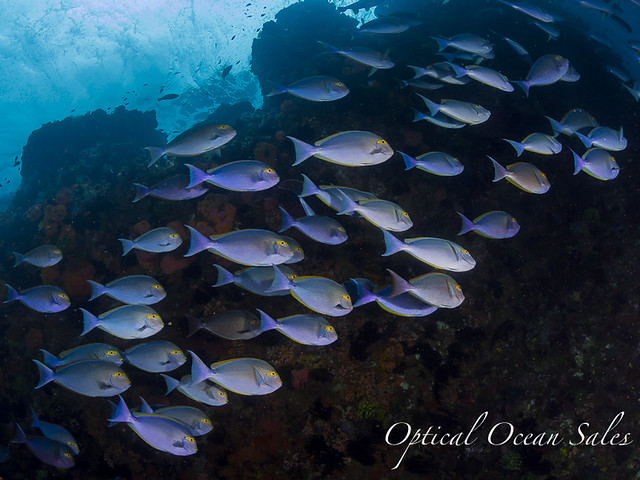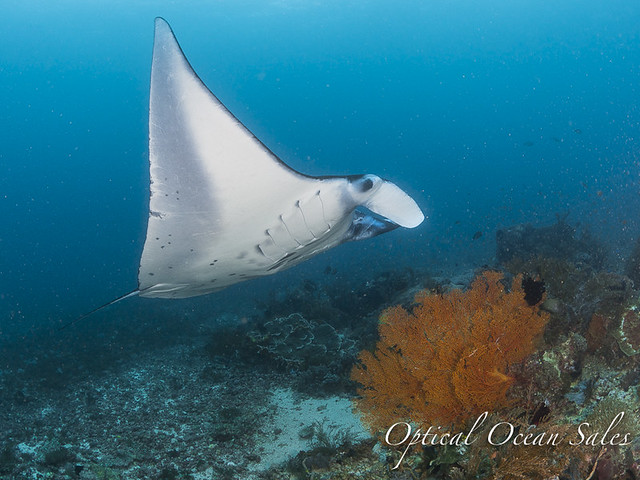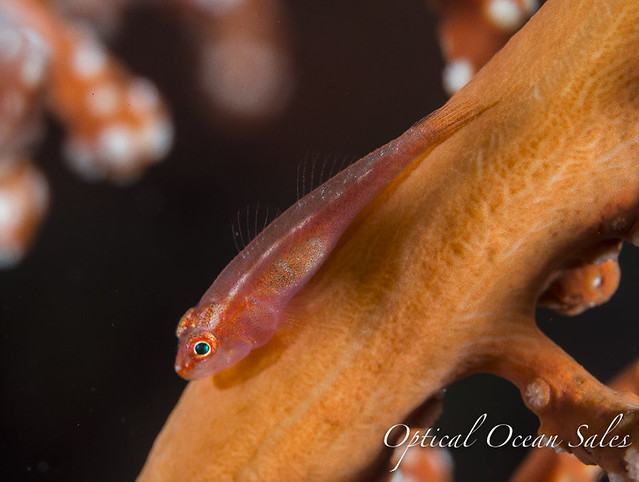 The new Olympus OM-D E-M1 MKII has been the darling new camera lately, with high reviews from all corners for its improved feature set over the original E-M1. There is a lot to like: much faster AF with 121 focus points (especially in low-light), 20MP live MOS sensor, faster TruePic III processor, dual card slots, incredibly high-speed frame rate (18fps), better in-body image stabilization, 4K video, improved weather sealing, much larger battery (an issue with the original model), increased programmability with a (slightly) improved menu interface.
The new Olympus OM-D E-M1 MKII has been the darling new camera lately, with high reviews from all corners for its improved feature set over the original E-M1. There is a lot to like: much faster AF with 121 focus points (especially in low-light), 20MP live MOS sensor, faster TruePic III processor, dual card slots, incredibly high-speed frame rate (18fps), better in-body image stabilization, 4K video, improved weather sealing, much larger battery (an issue with the original model), increased programmability with a (slightly) improved menu interface.  High DxO sensor ratings show it just a shade under the Nikon D500 (reviewed here). The combination of a wide range of superb PRO lenses, fast speed, and incredibly rugged build quality has everyone thinking about this m4/3rds camera as the answer for a smaller, high performance underwater platform.
High DxO sensor ratings show it just a shade under the Nikon D500 (reviewed here). The combination of a wide range of superb PRO lenses, fast speed, and incredibly rugged build quality has everyone thinking about this m4/3rds camera as the answer for a smaller, high performance underwater platform.Would that actually be the case in real-life diving? I recently took it on two trips, under different conditions, to find out how I liked this smaller, high performance wunderkind SLR. On the first trip to Komodo National Park in Indonesia, I took the Olympus housing and several lenses for above and below water use.
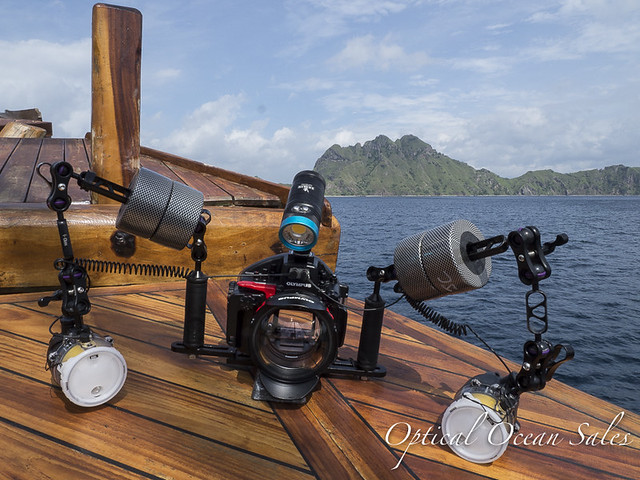 Komodo Island Expedition
Komodo Island Expedition
I was able to get an early copy of the new OM-D E-M1 MKII camera and Olympus PT-EP14 polycarbonate underwater housing for our February trip to Komodo Park, Indonesia. I set up the Olympus housing with a couple of Sea & Sea YS-D1 strobes and a Kraken Hydra 5,000 lumen light. A lot has been previously written about the Olympus housings, and the engineers I met with at DEMA echoed the claims that they had made several advances in PT-14, notably its improved depth rating to 200’, and a much-better shutter release control lever. The interchangeable lens port lock is a standard rotating and locking ring and easy to work. The rest of the controls are well laid out and labeled, and the PT-14 housing is light and easy to travel with.
Photo opportunities on this trip were by and large macro: fish portraits and close-focus wide-angle shots. Visibility was poor most of the time, so I generally shot with the
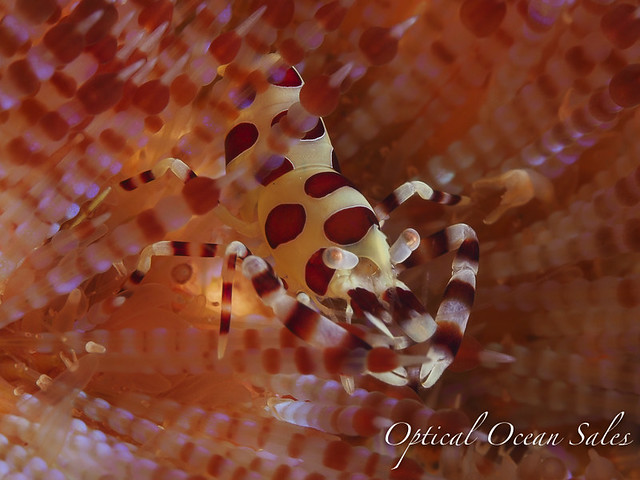 Olympus 60mm f2.8 lens. Olympus has come out with a new PPO-EP03 macro port for its housings that is much improved: smaller, with a threaded 67mm port to attach a macro diopter to (very useful to shorten focusing distances or increase image size). I tried out the new SagaDive TRIO macro diopter system with it. It worked like a champ, with 4 different image-size “gears” to shift to using its levers. This new macro port is a big improvement over the old PPO-EP01 flat port with its over-sized front ring; the only way to use a diopter was with a plastic clip-on adapter that frequently fell off and was awkward to store when not in use. I recommend the PPO-EP03 macro port if you have one of the Olympus OM-D housings, it's a lot easier to use.
Olympus 60mm f2.8 lens. Olympus has come out with a new PPO-EP03 macro port for its housings that is much improved: smaller, with a threaded 67mm port to attach a macro diopter to (very useful to shorten focusing distances or increase image size). I tried out the new SagaDive TRIO macro diopter system with it. It worked like a champ, with 4 different image-size “gears” to shift to using its levers. This new macro port is a big improvement over the old PPO-EP01 flat port with its over-sized front ring; the only way to use a diopter was with a plastic clip-on adapter that frequently fell off and was awkward to store when not in use. I recommend the PPO-EP03 macro port if you have one of the Olympus OM-D housings, it's a lot easier to use.I also took the opportunity to try out the 8mm f/1.8 FE PRO and 12mm f/2.0 lenses behind the Olympus 4” PPO-EP02 dome port. The 8mm is one of my favorites for deep-water wide-angle photography. I’ve used it in the Solomons for wrecks and close focus, but in Komodo, I enjoyed shooting schools of fish, soft coral, as well as close focus with good results.
The Olympus 12mm rectilinear lens is very nice for stills and video, working well behind the same 4” dome port. One advantage of this lens is that it’s easy to add a red filter to the lens (inside the port) for video. It was great for shooting the manta rays we found, giving better reach and less distortion than the 8mm, without the expense and size of the 7-14mm (even if you could house it in the Olympus housing – which you can’t). Olympus slr photographers should give this tiny, sharp lens a look, as a small rectilinear lens that’s extremely fast and easy to shoot, particularly with the new video capabilities of the E-M1 MKII. The quality is excellent and the image stabilization works well.
 Results were pleasing for the most part. I liked having greater magnification, and the depth of field offered was much easier to work with than other larger format cameras. Compared to my experience with the older E-M1, I found the low-light AF much improved and the overall speed much faster. The longer battery life made a big difference as well; I could easily do 3, if not 4, dives on one battery.
Results were pleasing for the most part. I liked having greater magnification, and the depth of field offered was much easier to work with than other larger format cameras. Compared to my experience with the older E-M1, I found the low-light AF much improved and the overall speed much faster. The longer battery life made a big difference as well; I could easily do 3, if not 4, dives on one battery.I tried using the C-AF+TR focus setting for macro, which uses continuous auto focus and but also allows focus tracking. As your subject moves around, it continues to focus where you locked it. This was available on the original E-M1, but the speed was lacking.
I found this feature to be very useful to shoot tiny coral whip gobies. They tend to dart around, and when shooting them in high magnification, can be an exercise in frustration to get a good shot of. But with the C-AF+TR mode, you lock their little eyeballs in, and then wait for them (and you) to settle down into a good composition – all the while the camera is keeping their eyeballs in focus – and wham – you have the shot!
The Olympus PT-EP14 underwater housing, is a good quality product, but it is a consumer housing and lacks a lot of ports and features of the other brands. It is certainly improved over older models, but lacks port offerings for many of Oly’s great PRO wide angle lenses like the 7-14mm PRO. Controls are good, just not all that ergonomic. In the end, it’s high $1299 price will have most buyers looking at other offerings that have more features and options.
Continued on Part 2: Nauticam NA-EM1 II Housing

